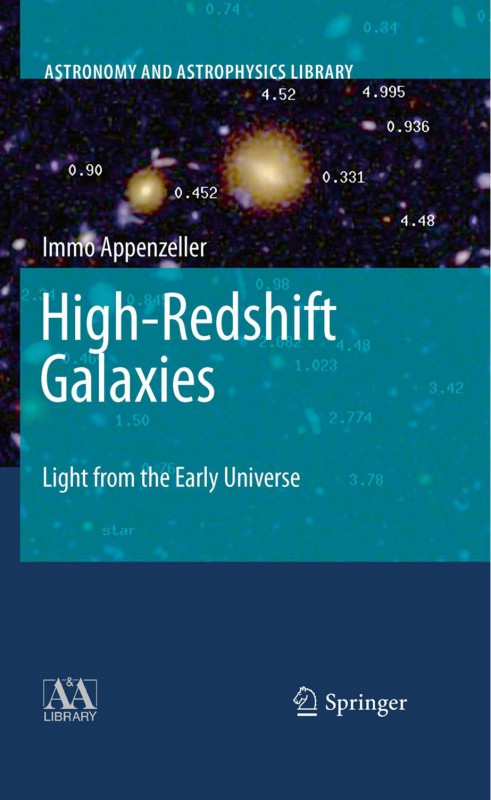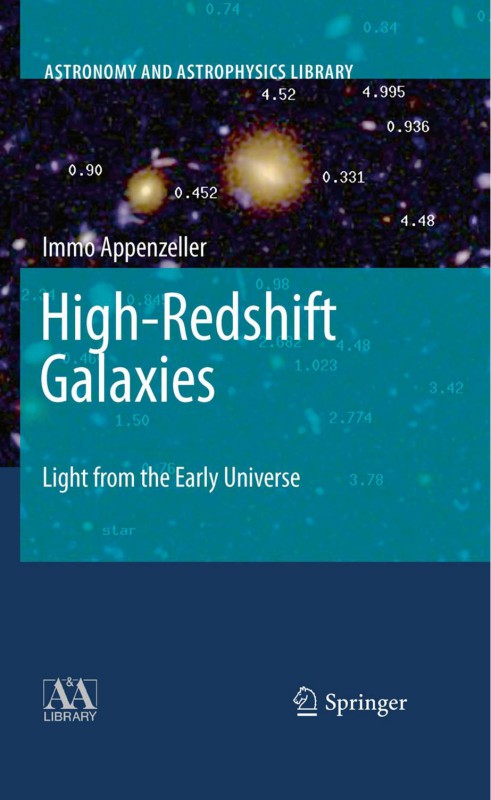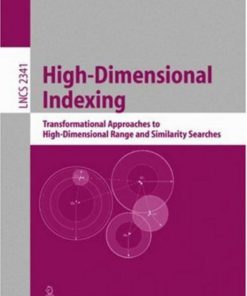High Redshift Galaxies Light from the Early Universe 1st Edition by Immo Appenzeller ISBN 9783540758242
$50.00 Original price was: $50.00.$25.00Current price is: $25.00.
Authors:High Redshift Galaxies Light from the Early Universe , Author sort:Universe, High Redshift Galaxies Light from the Early , Languages:Languages:eng , Published:Published:Jun 2009
High-Redshift Galaxies Light from the Early Universe 1st Edition by Immo Appenzeller – Ebook PDF Instant Download/Delivery. 9783540758242
Full download High-Redshift Galaxies Light from the Early Universe 1st Edition after payment

Product details:
ISBN 10:
ISBN 13: 9783540758242
Author: Immo Appenzeller
The high-redshift galaxies became a distinct research ?eld during the ?nal decade of the20thcentury. AtthattimetheLyman-breaktechniquemadeitpossibletoidentify signi?cant samples of such objects, and the new generation of 8 to 10-m telescopes resulted in ?rst good spectroscopic data. Today the high-redshift galaxies have developed into one of the important topics of astrophysics, accounting for about 5–10% of the publications in the major scienti?c journals devoted to astronomy. Because high-redshift galaxies is a rapidly developing ?eld and since new results are published constantly, writing a book on this topic is challenging. On the other hand, in view of the large amount of individual results now in the literature, and in view of the still growing interest in this topic, it appears worthwhile to summarize and evaluate the available data and to provide an introduction for those who wish to enter this ?eld, or who, for various reasons, might be interested in its results. The end of the ?rst decade of the 21st century appears to be a good point in time to attempt such a summary. The current generation of ground-based 8 to 10-m – optical telescopes, the Hubble Space Telescope, and the most important large radio telescopes have by now been in operation since about one or two decades. Although these instruments will continue to produce important scienti?c results for some time to come, many of the initial programs exploiting their unique new possibilities have been completed.
High-Redshift Galaxies Light from the Early Universe 1st Table of contents:
-
Cosmological Background
- The Big Bang and the Early Universe
- Cosmic Microwave Background Radiation
- The Role of Redshift in Understanding the Universe
-
Observational Techniques
- Telescopes and Instruments for Observing High-Redshift Galaxies
- Spectroscopy and Imaging
- Challenges in Observing the Early Universe
- The Role of Space Telescopes (e.g., Hubble, James Webb)
-
The Formation of Galaxies
- Theories of Galaxy Formation and Evolution
- Initial Conditions for Galaxy Formation
- Star Formation in the Early Universe
- The Role of Dark Matter in Galaxy Formation
-
Properties of High-Redshift Galaxies
- Morphology and Structure of Early Galaxies
- Star Formation Rates and Stellar Populations
- Chemical Composition and Metallicity
- Active Galactic Nuclei and Supermassive Black Holes
-
High-Redshift Galaxy Surveys
- Overview of Key Observational Surveys
- The Lyα and Other Spectral Features in High-Redshift Galaxies
- Galaxy Luminosity Functions at High Redshift
- Techniques for Identifying High-Redshift Galaxies
-
The Epoch of Reionization
- Understanding the Reionization Era
- Role of High-Redshift Galaxies in Reionization
- Observational Evidence and Models of Reionization
-
Galaxy Evolution at High Redshift
- Evolutionary Pathways of High-Redshift Galaxies
- Merging and Interaction of Galaxies
- Feedback Mechanisms (e.g., Supernovae, AGN Feedback)
-
Theoretical Models and Simulations
- Simulating Galaxy Formation and Evolution
- Comparing Observations with Theoretical Predictions
- Challenges in Modeling High-Redshift Galaxies
-
Future Directions
- Prospects with Next-Generation Telescopes (e.g., James Webb Space Telescope)
- Upcoming Surveys and Missions
- The Future of High-Redshift Galaxy Research












